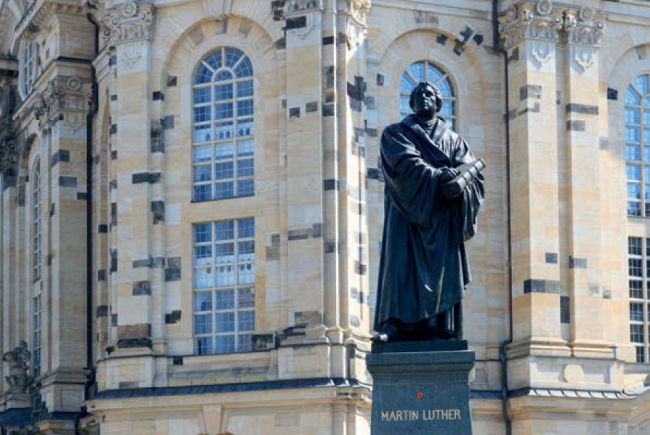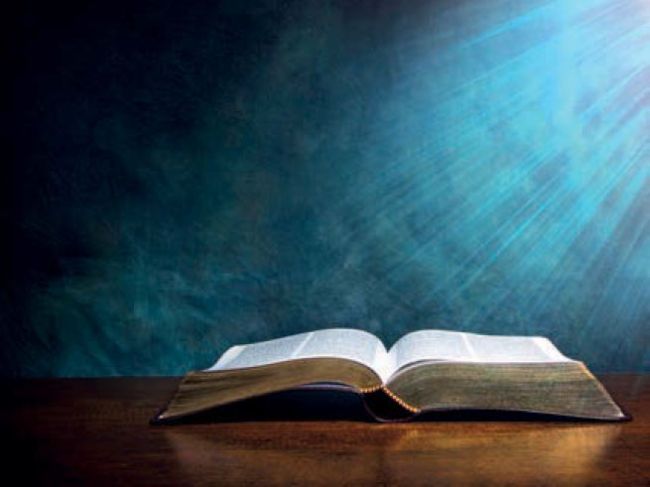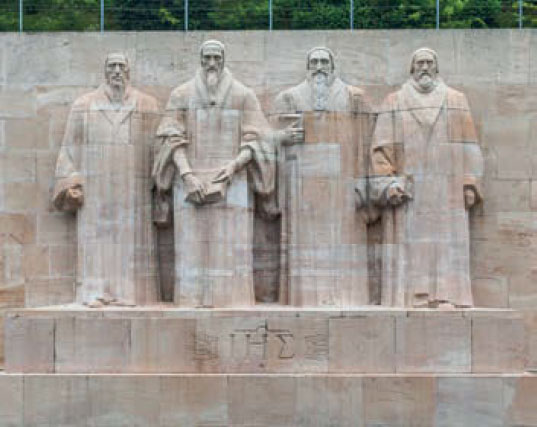As the year marking the 500th anniversary of the Reformation begins, the Very Rev Dr Ian Bradley reflects on the impact in Scotland.

Photos: iStock
THIS year marks the 500th anniversary of the event generally taken to mark the start of the Protestant Reformation, Martin Luther’s action in nailing up 95 theses attacking some of the practices and doctrines of the late Medieval Catholic church, especially the sale of indulgences, on the door of the castle church in Wittenberg, a university town in eastern Germany.
Inevitably, and rightly, commemorative events here will focus on the legacy of Lutheranism in Scotland and more widely on the country’s Reformation heritage.
As is well known, Scotland, and the Church of Scotland in particular, ultimately drew more in terms of theology, doctrines and forms of church government and polity from the other great founding father of the European Reformation, Jean Calvin, than it did from the more conservative figure of Luther.
However, the influence of Luther was also important here, especially in the early years of the spread of Protestant ideas from the continent. Luther’s critique of Medieval Catholicism and his strong assertion of the doctrine of justification by personal faith alone, without recourse to works, the accumulation of merit or the activities of the church, first came into Scotland in the form of literature which circulated particularly in the east coast burghs. The first agent of Lutheranism to appear in Scotland seems to have been a Frenchman, Monsieur de la Tour, who arrived in 1523 to work for the Duke of Albany and suffered martyrdom when he subsequently returned to France.
An Act of Parliament in 1525 banned the importation of any literature by or about ‘that heretic Luther’ into Scotland but this did not stop several eminent Scots taking up and promulgating his main ideas. The most prominent of them was undoubtedly Patrick Hamilton, who was probably born near Glasgow around 1504 and studied at the University of Paris where he came into contact with the humanist teachings of Erasmus. From 1523 he continued his studies at the University of St Andrews, where he possibly first encountered Luther’s writings, and in 1526 he became a priest. His open support for the banned teachings of Luther, notably the idea of justification by faith alone, brought him into direct conflict with James Beaton, Archbishop of St Andrews. Hamilton retreated to Germany in 1527 where he visited Wittenberg and Marburg, both leading centres of Lutheranism, and wrote a book with a strongly Lutheran slant. Back in Scotland the following year he was summoned before Beaton on charges of heresy, found guilty and slowly burnt to death at the stake on February 29 at the age of just 24. The initials PH carved in the pavement in front of the entrance to the St Andrews University Chapel on South Street mark the place of his martyrdom. According to John Knox, a friend of Beaton advised the Archbishop against further public burnings ‘for the reek of Master Patrick Hamilton has infected as many as it blew upon’.
The courage of Hamilton in facing his agonising death as the first Protestant martyr in Scotland had a considerable effect on promoting Lutheranism here. It made particular inroads in St Leonard’s College at St Andrews where both students and staff became outspoken critics of ecclesiastical corruption. Scotland’s second Protestant martyr, Henry Forrest, a Benedictine friar from Linlithgow and graduate of St Leonard’s College who had become Dean of the Abbey on the Isle of May, was burned to death near St Andrews Cathedral in 1533 for possessing a New Testament in English and a?rming that Hamilton, whose death he had witnessed, was no heretic but a preacher of God’s truth.
Other early Scottish Protestants who were much influenced by Patrick Hamilton in their espousal of Lutheranism included Alexander Seton, a Dominican prior and confessor to James V, who fled to England after denouncing the failings of the Catholic bishops and the immoralities of the king, and Alexander Alesius, another graduate of St Leonard’s College, who implored James V to reform the Scottish church and sponsor a vernacular version of the Bible. He spent most of his life in exile in Germany from where he produced Protestant tracts which found their way back to his native Scotland. John Gau and Henry Balnaves, both graduates of St Salvator’s College in St Andrews, were also enthusiastic propagandists for Luther’s ideas on justification by faith. Walter Milne, a former priest at Lunan in Angus who was burned to death at the age of 82 in St Andrews in 1558 for holding the mass as idolatrous and supporting clerical marriage and private preaching, was another figure strongly influenced by Luther’s teaching. He was the last Protestant martyr in Scotland, dying just two years before the Scottish Parliament repudiated the Pope’s authority and Roman Catholicism’s status as the country’s established faith, so initiating the Scottish Reformation.
“ The Church of Scotland established in 1560 was very much a Reformed kirk modelled on the principles that Calvin had put into practice in Geneva, as was the case with the Protestant churches of France and the Netherlands.
The Church of Scotland established in 1560 was very much a Reformed kirk modelled on the principles that Calvin had put into practice in Geneva, as was the case with the Protestant churches of France and the Netherlands. The Church of England pursued a form of government and worship which was closer to that of the Lutheran churches of Germany and Scandinavia, retaining bishops and with more emphasis on set prayers and liturgies. Across Europe, Protestant churches shared a new emphasis of worshipping in the vernacular, the language of the people, rather than in Latin as through the Middle Ages.
Congregational hymn singing was an important aspect of this new approach and the first significant Scottish collection of material for this purpose, in fact, owed more to Lutheran than Calvinist principles. Ane Compendious Book of Godly and Spiritual Songs (also known as The Gude and Godlie Ballads) was produced by James and John Wedderburn, two brothers from Dundee who had been educated at St Andrews University. The earliest extant edition of their collection dates from 1567 but it is likely that much of the material was in circulation in the 1540s, if not earlier. There is a strong Lutheran influence on the contents. Of the 16 spiritual songs in the collection, 11 are from the German, and of the 22 psalm versions, 13 are from German. There are also 20 ‘ballads from Scripture’, seven adaptations of secular ballads, strongly attacking the Pope and Catholic doctrine, and six hymns. All were designed to be set to simple secular folk tunes, following Luther’s belief that Christian worshippers should sing hymns and songs written by contemporary writers to popular melodies of the day.
After this brief Lutheran excursion, the subsequent history of Scottish psalmody and hymnody was to be very different in influence and orientation. Calvin’s insistence that the only material that could be properly sung in churches were the Psalms of David, put into metrical form and sung to dedicated tunes which would never be heard in the street or the public house, became normative and dictated what congregations sang for almost 300 years. The first Scottish Psalter was issued in 1564 as part of the Book of Common Order and the General Assembly of the Church of Scotland ordained that every minister, reader and exhorter should have and use a copy. It adopted all the psalm versions and tunes contained in the 1561 edition of the Anglo-Genevan psalter produced by the congregation of English exiles from the Marian persecutions that had formed in Geneva under John Knox.
So was born the Kirk’s attachment to metrical psalmody and repudiation of the alternative Lutheran approach of singing contemporary hymns and paraphrases to popular tunes.

Photos: iStock
Perhaps the 500th anniversary of the Reformation will trigger conversations across the Kirk as to the nature and value of our Reformed heritage, the value and relevance of the theological insights and innovations made by Luther, Calvin and the early Scottish Reformers, some of which might, indeed surprise us (their passion for frequent communion, for example), and the positive legacy of Protestantism and what we can still affirm in it and build on.
It was not just in worship that Scotland followed the Calvinist rather than the Lutheran strand of Protestantism. In his excellent recent book The Origins of the Scottish Reformation (Manchester University Press, 2006), Alec Ryrie writes that ‘Scottish Protestantism began as a broadly Lutheran movement during the reign of James V but had unmistakably become a Reformed (or ‘Calvinist’) one by 1560’. He points out that there was nothing automatic or inevitable about this and attributes much importance to the Scots’ preference for Calvin’s teaching about the presence of Christ in the bread and wine of the Eucharist as an essentially spiritual presence in the mind of the believer over Luther’s more objective and Catholic-inclined Eucharistic theology. The influence of Calvin’s Geneva on those Scots who found themselves as exiles there, notably John Knox, also played a considerable role in determining the direction of the Scots Reformation.
It is, of course, a moot point as to how far and in what respects the Church of Scotland still consciously sees itself as Calvinist. There has been a steady process of distancing from the articles of the Westminster Confession and ‘King Calvin with his iron pen’ is much less securely enthroned now than when Edwin Muir wrote his devastating poem about the Kirk, ‘The Incarnate One’, more than sixty years ago. There are also much broader questions as to the extent that Scotland still sees itself in any real sense as a Protestant, let alone a Calvinist, nation. Protestantism was, of course, foundational in the forging of the United Kingdom, and not least in bringing Scotland and England together in the Union, and its weakening hold in recent decades is often taken as one of the major factors behind the rise of Scottish nationalist sentiment.

Photo: The Reformation Wall, Geneva. Left to Right: William Farel (1489–1565), John Calvin (1509–1564), Theodore Beza (1519–1605), John Knox (c.1513–1572)
Maybe in some respects the modern Church of Scotland is leaning more towards its early Lutheran roots and even acknowledging its medieval Catholic origins in a greater concern with liturgy, spirituality and the mystical and experiential side of Christianity as against the rational, intellectual and disputatious. Yet it remains very clearly a church in the Reformed tradition, allied to other churches in Europe and beyond which share a Calvinist pedigree, and characterised, perhaps not always quite as fervently or enthusiastically as some would wish, by its motto ‘Semper Reformanda’ and the symbol of the ever burning bush which is never quite consumed by fire.
Perhaps the 500th anniversary of the Reformation will trigger conversations across the Kirk as to the nature and value of our Reformed heritage, the value and relevance of the theological insights and innovations made by Luther, Calvin and the early Scottish Reformers, some of which might, indeed surprise us (their passion for frequent communion, for example), and the positive legacy of Protestantism and what we can still affirm in it and build on.
At the same time it is to be hoped that this anniversary will also bring Protestants and Catholics closer together, acknowledging the prejudices and intolerance of the past and the hurt we have inflicted on each other, and resolving to walk on together as pilgrims and fellow followers of Christ. It is fitting that the commemoration of the anniversary began in Europe last October with a joint Lutheran-Catholic service in Lund, Sweden, attended by Pope Francis and a declaration of common purpose.
It is appropriate that the events planned to commemorate the 500th of the anniversary later this year are particularly focused on St Andrews. The full programme can be found on the website http://2017.wp.st-andrews.ac.uk/.
Highlights include lectures on ‘Luther and the Media’ by Professor Andrew Pettegree on October 10, ‘The Theologies of the Reformation’ by Professor Mark Elliott on October 17 and ‘Luther and the Arts’ by Dr Bridget Heal on October 24. There will also be an exhibition of illustrated Reformation books and pamphlets from the University of St Andrews collection.
Commemoration of the Reformation anniversary in St Andrews will reach a climax at the end of October with a special service, a concert of sixteenth and seventeenth century Lutheran music and a lecture on the lingering legacy of the Reformation in Scotland and Britain over the weekend of 28/29 October.
An ecumenical service to mark Reformation Day itself, Tuesday October 31 2017, at the town’s Holy Trinity Parish Church, with participation from the Churches and the university will feature a sermon delivered by the Rt Rev and Rt Hon Dr Rowan Williams, former Archbishop of Canterbury.
The Very Rev Dr Ian Bradley is Principal of St Mary’s College, St Andrews and Reader in Church History and Practical Theology at the University of St Andrews.